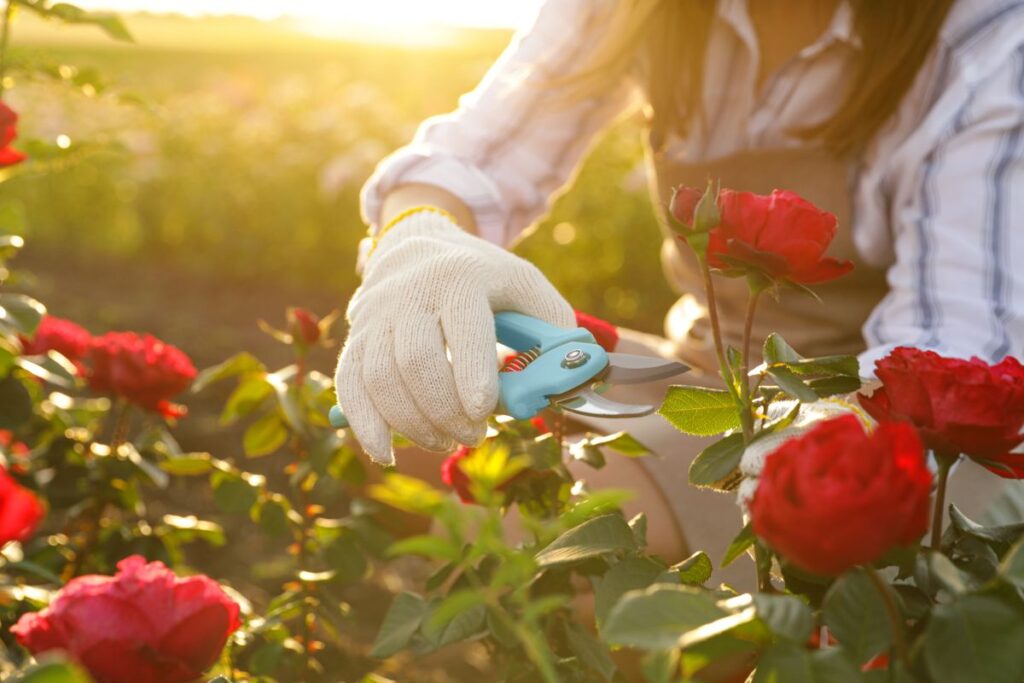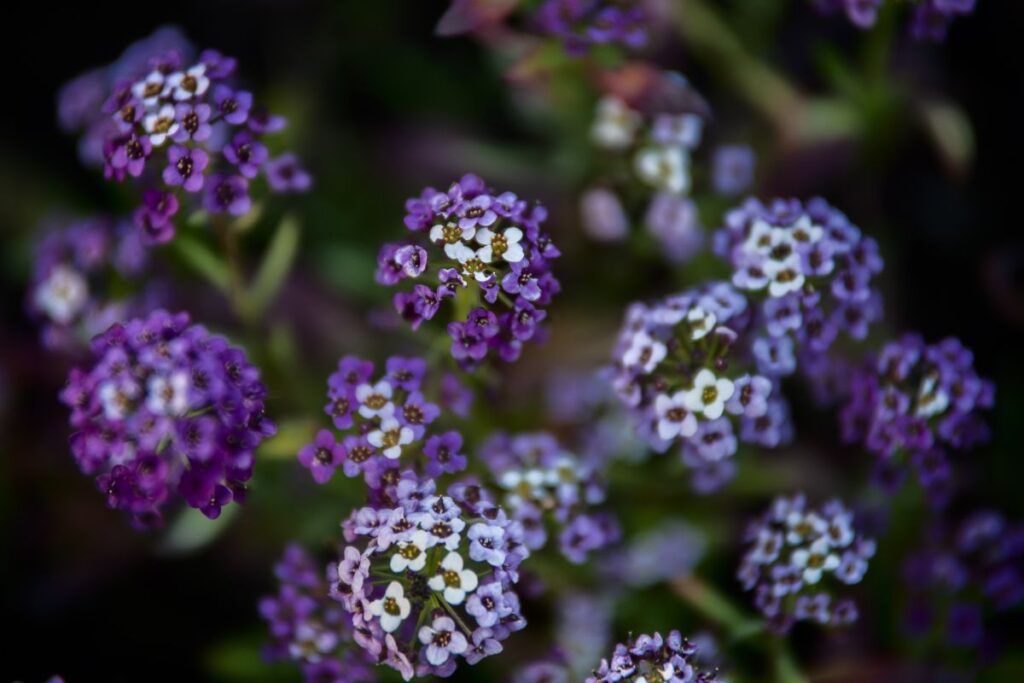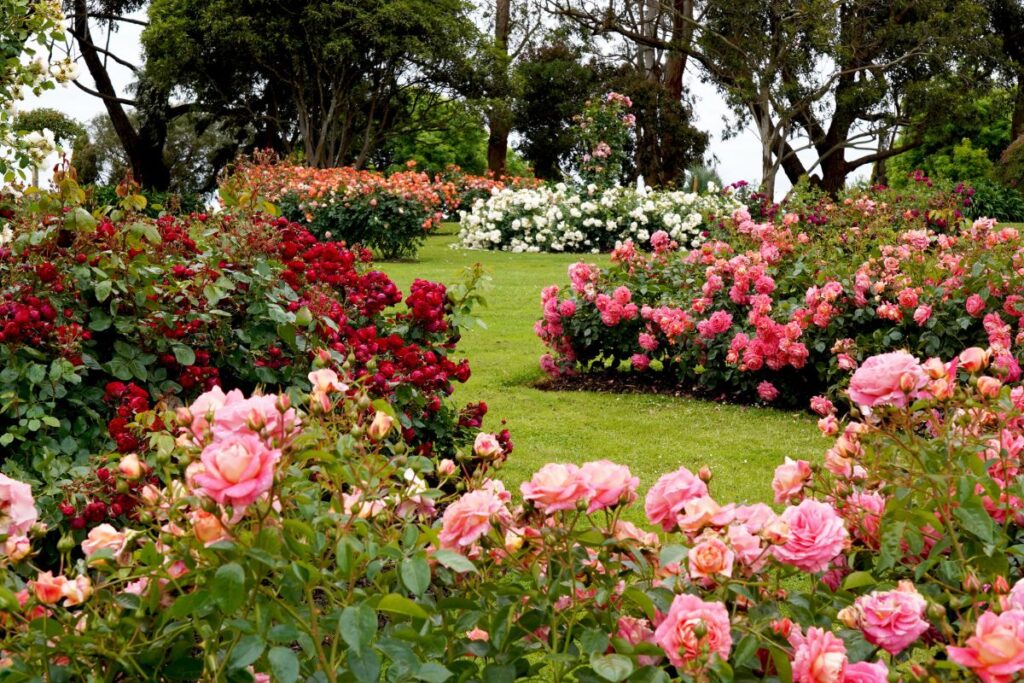Love roses?
Want to keep them healthy and pest-free?
Discover the 12 best companion plants that will support your roses.
Ready for a thriving, beautiful garden?
Let’s dive in!
Companion Planting Explained

Companion planting involves growing certain plants close to your main crop—flowers, fruits, or vegetables—with the aim of enhancing growth or aesthetic appeal. Some plants, for example, lure beneficial insects that act as natural pest control, while others emit a scent that deters pests.
For rose enthusiasts, selecting a complementary plant requires considering the desired effect. If the goal is to spotlight roses, choosing subtle companions can draw attention to their splendor. Incorporating white blooms often achieves this effect.
In the case of pest control, pairing your roses with aromatic herbs may help protect them from unwanted insects. These herbs naturally fend off pests, allowing your roses to flourish without the need for chemical interventions.
Ideal Companions for Rose Gardens

1. Alyssum
Honey-scented sweet alyssum forms a charming white blanket under your roses, thriving in similar soil conditions. As it prefers partial shade, the taller roses offer a respite from the intense sun, making them excellent partners in your garden.
2. Baby’s Breath
Commonly seen beside roses in bouquets, gypsophila, or gypsophila, brings out the vibrant hues of roses with its delicate white blooms. They share similar growing requirements, need ample sunlight, and well-draining soil. Enjoy the dance of butterflies they invite throughout the growing season.
3. Catmint
Nepeta, with its striking purple-blue tint, adds a dynamic contrast to your roses, luring an array of wildlife including hummingbirds and bees. It also effectively camouflages the base of rose plants, extending the display of blooms in your garden.
4. Clematis
Pair climbing roses with vine clematis for an impressive display on arches or pergolas. This duo invites beneficial insects that help control pests. Clematis can even be potted, offering a flexible solution to enrich your floral setting.
5. Foxglove
Digitalis, or foxgloves, tower with elegance alongside roses, peaking in early summer. With a range of colors, they complement roses beautifully and share similar care needs while attracting beneficial insects. Mindful spacing is key, particularly in less humid regions, for a thriving display.
6. Geranium
Cranesbill geraniums are not just visually appealing with their hardy pinks but also act as a natural pest deterrent. Situate them where they can bask in full sunlight, preferably in front of your roses, to ensure unobstructed growth from spring to fall.
7. Lavender
Integrate lavandula, or lavender, with roses for a visually stunning and aromatic combination. While lavender requires less fertile soil, it can be grown near roses in separate beds or containers, enhancing the beauty of your space and repelling pests with their combined scents.
8. Lilies
Complement your roses with the striking blooms of lilies. Their timing and fragrant flowers extend the blooming season and captivate your senses. Lilies may also serve as a diversion for beetles, acting as a protective barrier for roses. Remember to safeguard children and pets from lilies due to their toxicity.
9. Marigold
Tagetes, or marigolds, are a powerhouse among companion plants. Their vibrant flowers pair superbly with roses, and their natural properties help fend off nematodes while luring pollinators and predators to manage pests. They’re as beneficial in the rose garden as they are among vegetables.
10. Sage
With its Mediterranean roots, salvia requests well-draining and nutrient-adequate soil that contrasts with the preferences of roses. Consequently, growing them separately yet nearby enriches the garden environment and helps prevent rose ailments while drawing pollinators.
11. Shasta Daisies
Leucanthemum, or Shasta daisies, offer a timeless aesthetic that blends seamlessly with any rose variety. Full sun lovers, these companions are easy to maintain and please pollinators, ensuring your garden is both beautiful and beneficial.
12. Wallflower
The richly colored erysimum or wallflower, enhances the vibrancy of neighboring roses and has the unique ability to deter herbivores, thanks to its natural repellent properties. This protective trait along with their captivating beauty makes them a valuable addition to your rose garden year-round.
Plants to Avoid Near Roses

Certain plants can negatively affect your roses’ growth. Avoid planting irises, wild petunias, and bunchberries—all of which thrive in damp conditions—beside your roses, which prefer drier soil. Similarly, keep fuchsias, toad lilies, and leopard plants at a distance because they flourish in the shade, in contrast to your roses that need plenty of sunlight.
Be wary of highly aromatic plants like mint, citrus trees, hot peppers, and cedar. While these may repel pests, they tend to attract them to neighboring flowers, such as your roses. Moreover, mint might spread aggressively, overshadowing the nearby roses due to its invasive nature.
Insights on Rose Horticulture and their Plant Neighbors

Cultivating Roses Near Arboreal Areas
While introducing roses in your garden, it’s critical to remember that most varieties thrive in bountiful sunlight. Under trees, they struggle due to insufficient light and competition for water, as trees are quite thirsty. Exceptionally, some roses can manage in partial shade but should still avoid the vicinity of trees, especially walnut and hickory species. These trees release juglone, a compound detrimental to many plants including roses, by hindering their ability to absorb moisture and nutrients properly.
Plant Partners for Grafted Rose Varieties
Surrounding your rosebush with complementary plants can enhance its appearance by covering the stem, colloquially known as the ‘knees.’ Search for shade-tolerant, low-growers such as fragrant geraniums, delicate snowdrops, vivid anemones, or the charming grape hyacinths. These companions not only conceal the base of the roses but also add a layered texture to your garden.
Association of Roses and Tomato Plants
The rumored benefit of pairing tomatoes with roses to combat rose blackspot is not backed by substantial evidence. While they can coexist spatially, they do not provide a significant aesthetic or health advantage for one another. Consequently, the belief that tomatoes act as protectors for roses against certain diseases might not withstand practical gardening tests.
Integrating Vegetables into Your Rose Garden
Cultivating vegetables alongside roses is feasible with careful planning. Organic approaches are favored, as inorganic sprays on roses may not be suitable for edible crops. Utilize the space by planting vegetables like beetroot, carrots, lettuce, kale, and cabbage at the edge of the rose bed to allow ample sunlight for all your plants.
Herbs Complementing Your Rose Plants
Pairing herbs with roses can create a delightful sensory experience. Consider planting basil, sage, thyme, lavender, chamomile, or rosemary nearby. Not only are these herbs compatible with roses in terms of care, but they also contribute to the unique aroma of your garden space. As you explore, include other herbs you enjoy, and if space is limited, you can use containers for versatility. An eye for blooming cycles can lead to a vibrant display year-round.
Engage in planting herbs and vegetables with your roses or consider the implications of shadowy areas under trees. Choose plants that coexist harmoniously and share similar light and water requirements for a thriving garden.

